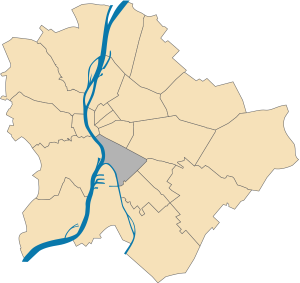Discovering Ferencváros: The Heartbeat of Budapest
Ferencváros, often referred to as Budapest’s IX district, is a vibrant and historically rich neighborhood in the heart of Hungary’s capital. With its deep-rooted history, iconic landmarks, and bustling urban life, Ferencváros offers a unique blend of the old and the new, making it a must-visit for tourists and locals alike.
Introduction
Ferencváros, also known as Budapest’s IX district, is a testament to the city’s resilience and evolution. From its ancient roots to its modern-day urban charm, the district has witnessed significant events that have shaped its identity and the broader narrative of Budapest.
Location

Situated on the Pest side of the city, Ferencváros is bordered by several other districts, including Budapest V, VIII, X, XIX, XX, and XXI. Its strategic location near the Danube River has played a pivotal role in its development and significance over the centuries.
Geography
Covering an area of 12.53 km², Ferencváros boasts a diverse landscape that seamlessly blends historical architecture with modern infrastructure. The district’s proximity to the Danube River has influenced its geography, making it a focal point for trade, commerce, and cultural exchange.
Landmarks
Ferencváros is home to several iconic landmarks, including the Hungarian National Theatre, the Hungarian Museum of Applied Arts, and the Ferencváros Parish Church at Bakáts Square. These landmarks not only stand as architectural marvels but also as symbols of the district’s rich cultural heritage.

Demographics
As of January 1, 2022, Ferencváros had a population of 59,244 residents. The district’s diverse population reflects Budapest’s cosmopolitan nature, with people from various backgrounds and cultures calling it home.
Education
Education has always been a cornerstone of Ferencváros. Historical records indicate the presence of German-language elementary schools in the district as early as the 18th century. By 1803, Hungarian-language education was also being offered, highlighting the district’s commitment to fostering a multilingual and educated populace.
Museums
The Hungarian Museum of Applied Arts, located in Ferencváros, stands as a testament to the district’s artistic and cultural contributions. This museum, along with others in the vicinity, offers visitors a deep dive into Hungary’s artistic traditions and innovations.
Twin Towns
Ferencváros has established twin town relationships with several cities, including Magyarkanizsa, Pöstyén, Sepsiszentgyörgy, and Királyhelmec. These partnerships foster cultural exchange and mutual understanding, further enhancing the district’s global connections.
Conclusion
Ferencváros is more than just a district in Budapest; it’s a living tapestry of history, culture, and modernity. Whether you’re a history buff, an art enthusiast, or someone looking to experience the authentic vibe of Budapest, Ferencváros promises an experience like no other. As you walk its streets, you’re not just exploring a neighborhood; you’re journeying through time.